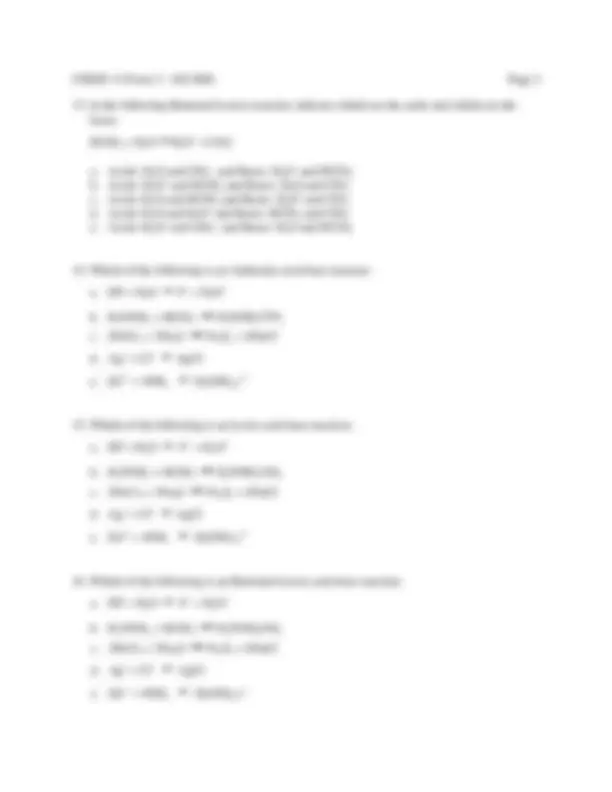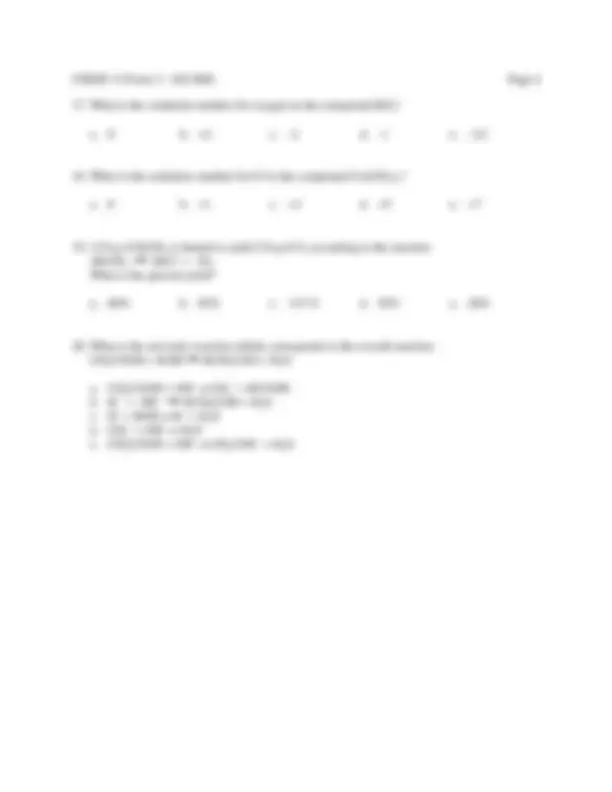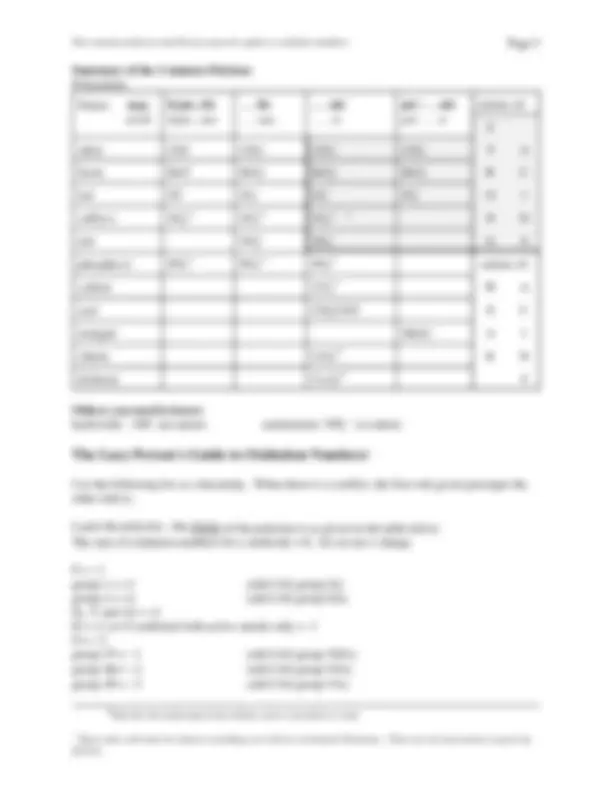





Study with the several resources on Docsity

Earn points by helping other students or get them with a premium plan


Prepare for your exams
Study with the several resources on Docsity

Earn points to download
Earn points by helping other students or get them with a premium plan
Community
Ask the community for help and clear up your study doubts
Discover the best universities in your country according to Docsity users
Free resources
Download our free guides on studying techniques, anxiety management strategies, and thesis advice from Docsity tutors
Material Type: Exam; Professor: Condon; Class: General Chemistry I; Subject: Chemistry; University: Roane State Community College; Term: Fall 2002;
Typology: Exams
1 / 6

This page cannot be seen from the preview
Don't miss anything!




Do not write on the test. Fill in the answers on the answer sheet. Be sure you have your name (last name first, then first name) on the answer sheet and filled in the “bubbles” for the name.
a. 213 mL b. 1701 mL c. 851 mL d. 426 mL e. 1.42 mL
a. 9.71 × 10!^2 g b. 1.313 g c. 0.194 g d. 0.389 g e. 194 g
*x indicates that the stoichiometry is not given.
a. H 3 PO 3 + HBr b. H 2 PBr 5 O c. H 3 PO 4 + HBr d. HPO 2 + HBrO e. HPO 2 + Hbr
a. H 2 SO 4 b. H 2 SO 3 c.. H 2 S d. HSO 2 e. H 2 SO 2
a. Ca(OH) 2 b. CaH 2 O c.. HCaO 2 d. CaOH e. H 2 CaO
What is the percent yield? a. 60% b. 85% c. 115 % d. 95% e. 20%
a. CH 3 COOH + OH!^ ∫ CH 3 +^ + HCOOH
c. H+^ + KOH ∫ K+^ + H 2 O d. CH 3 +^ + OH!^ ∫ H 2 O e. CH 3 COOH + OH!^ ∫ CH 3 COO!^ + H 2 O
The common polyions and the lazy person's guide to oxidation numbers Page 5
#Only the first hydronium from sulfuric acid is classified as weak.
Summary of the Common Polyions Polyanions: Name: ions acids
hypo...ite hypo...ous
... ite ... ous ... ate ... ic
per... ate per... ic
anions of: S chlor ClO!^ ClO 2!^ ClO 3!^ ClO 4!^ T A brom BrO!^ BrO 2!^ BrO 3!^ BrO 4!^ R C iod IO!^ IO 2!^ IO 3!^ IO 4!^ O I sulf( ur ) SO 22!^ SO 32!^ SO 42!^ #^ N D nitr NO 2!^ NO 3!^ G S phosph( or ) PO 23!^ PO 33!^ PO 43!^ anions of: carbon CO 32!^ W A acet CH 3 COO!^ E C mangan MnO 4!^ A I chrom CrO 42!^ K D dichrom Cr 2 O 72!^ S
Others you need to know: hydroxide: OH!^ (an anion) ammonium: NH 4 +^ (a cation)
Use the following list as a hierarchy. When there is a conflict, the first rule given preempts the other rule(s). Learn the polyions - the charge of the polyions is as given in the table above. The sum of oxidation numbers for a molecule = 0, for an ion = charge. F =! 1 group 1 = +1 (old CAS group IA) group 2 = +2 (old CAS group IIA) Sc, Y and Al = + H = +1 or if combined with active metals only = - O =! 2 group 1 7 =! 1 (old CAS group VIIA) group 1 6 =! 2 (old CAS group VIA) group 1 5 =! 3 (old CAS group VA)